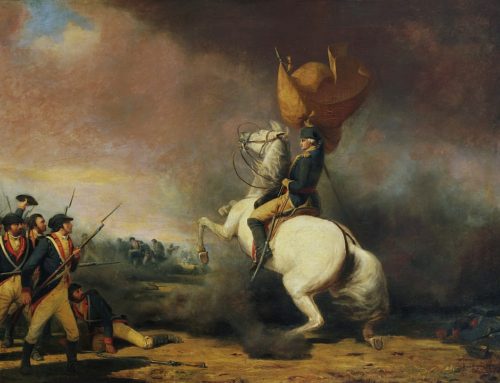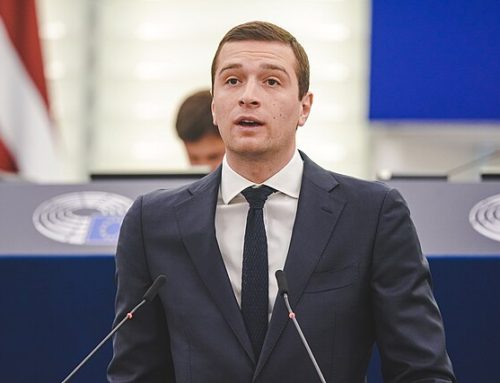By T.J. English
Introduction:
Havana Nocturne brings to life a by-gone era. It is more than just a compelling story about the Mafia’s goal to create a gambling empire in Cuba. It provides an insight into how the Mob operated both in the United States and Cuba. Contrary to the pronouncements of J. Edgar Hoover, our longtime head of the FBI, key mafia leaders were part of a syndicate. Mafia leaders insisted that local gangster families invest in far flung projects, determined profit allocations among members, established targeted business activities, and made life and death decisions overs their membership.
In 1957 police uncovered a meeting of 100 gang leaders in Appalachian New York at the home of Joe (the Barber) Barbera. One key agenda item was the gangsters’ grievance over Lansky’s outsized control over mob activities in Cuba.
The Appalachian meeting proved that the different Mafia families spread out over America were part of a national syndicate. Many years later, a close associate of Meyer Lansky admitted that Lansky had tipped off the police about the meeting in order to undermine his gangster competitors.
Havana 1950’s
By the late 1950’s Havana was the ‘hottest’ place on the planet. In addition to the attraction of gambling, it offered sex, sand, and sun. Unlike Las Vegas where African American entertainers were relegated to segregated accommodations, Cuba welcomed African-American entertainers such as Nat King Cole, Earthy Kitt, and Dizzy Gillespie. The rich and famous flocked to this Caribbean resort—John Kennedy, George Raft, Frank Sinatra, Marlin Brando, Elizabeth Taylor. They consorted with the mobsters who in partnership with Cuban President, Fulgencia Batista, provided the ‘fun.’ Americans danced the night away listening to Cuban music that blended sounds from Latin America and Africa.
Caribbean
During the 1950’s only three countries—Cuba, Haiti, and the Dominican Republic—were independent of colonial rulers. All three nations had long time dictators. The gangsters who took over Cuba’s gambling operations incorrectly believed that Batista could control Cuba for decades. Moreover, if Batista failed to retain power, they believed his replacement would recognize that a gambling empire in Cuba was a wonderful tourist magnet. They never expected Fidel Castro to (1) topple Batista and (2) close the casinos. In fairness to the mob, Castro’s longtime rule remains mysterious. The fact that Cuba would remain a communist enclave some twenty years after the fall of the Soviet Union is indeed baffling.
Mob
In 1933, Meyer Lansky convinced leading Mob leaders to spend over $6 million dollars for bribes to Fulgencia Batista, who had emerged as Cuba’s military leader. For over twenty-five years, Lansky and Batista worked closely together. Lansky felt that Cuba offered a superb business opportunity. Lansky felt that the island, only 90 miles south of Cuba, could become a tourist magnet, attracting $ millions. The profits from the Cuban operation could be recycled back to America letting the mob exploit numerous legitimate and illegitimate business opportunities. Batista never stopped demanding pasta ‘money’ from the mob. In 1958 he was getting $1.2 million weekly from Lansky.
The mob partnership with Batista ended on January 1, 1959 when Batista fled Cuba for the Dominican Republic. His successor, Fidel Castro, understood that “the true nature of the Good Times” created a moral rot. After taking power, Castro shut down the casinos, canceled the national lottery, and declared in one of his first decrees was that cleaning up “vice, corruption, and gambling” was among the highest priorities of the new government.
English, the author, provided a first-rate insight into key Mafia leaders. Similar to the assimilation that was part of American life, the Mafia expanded its membership beyond its traditional roots—Sicilians. Specifically, Jews and Irish joined forces with Sicilians to create a gangster empire. Old style Mafia leaders who wanted to keep only Italians in key positions were eliminated. Several of the mobster kingpins—Charles (Lucky) Luciano, Meyer Lansky, and Santo Trafficante believed that Cuba offered unfettered opportunities. The overall concept was the following: Profits from the Cuban gambling, prostitution, and narcotics traffic, would be recycled to America. This would allow the Mafia to increase exponentially their scope of interest.
Lansky
Lansky, a Jew, was particularly effective. He was a great conciliator and took great pains to work out problems among the various gangster factions. His sought frequently to build consensus using his intuitive diplomatic instincts not by assassinating opponents. He worked hard at forging economic compromises. Lansky had excellent business instincts, and became the “brains” of the operation. It is hard to know his true wealth. Lansky’s will revealed in 1987 that he had an estate of only $57,000. However, the Wall Street Journal in 1969 estimated his worth at $300 million. It is doubtful that the shrewd Lansky lost most of his fortune.
Luciano
Lansky’s close friend, Charles (Lucky) Luciano was the titular head of the “syndicate” until his deportation to Sicily in 1946. Luciano was careful not to officially take the title of supreme leader. He recognized that maintaining a democratic front would reduce tensions with leaders of the various families throughout the United States. There were major crime families in every major city—Chicago, New Orleans, Tampa, Kansas City, Miami, Detroit, etc. Lucky was unable to maintain his control over his gangster empire in exile.
Siegal
Ben (Bugsy) Siegal was close friends with both Luciano and Lansky. However, because of his craziness, Siegal was forced to relocate to the West Coast. Ultimately, Siegal was assigned the responsibility of building Las Vegas into a major gambling center. Until then Las Vegas was a small, insignificant dusty town. Siegal built the first deluxe gambling complex, the Flamingo. The mob ultimately decided to assassinate Siegal because of beliefs that Siegal has siphoned off millions to his personal accounts in Switzerland. In many ways, the Las Vegas casinos and the Havana casinos worked together. Employees and entertainers shuffled back and forth between these two locales. In 1958 the Nevada gambling commission outlawed dual ownership of casinos in Las Vegas and Havana. While initially gangsters grumbled at having to dispose of their Havana assets, after Castro’s expropriation of the Havana casinos, the ‘forced sale’ turned out to be a blessing.
Trafficante
Santo Trafficante headed gangster operations in Tampa, Florida. Trafficante’s reach in Cuba was second only to Lansky. Unlike most gangsters Trafficante despised Lansky. However, because he understood that if he eliminated “the dirty Jew” he could stir up such a wave of gangland retributions, he acquiesced to Lansky’s leadership in Cuba.
Anastasia
Albert Anastasia was chief executioner of Murder Inc. He possibly could have killed outright or ordered the killing of 1000’s of people. Unlike Luciano and Lansky, Anastasia enjoyed killing people. For example, although Anastasia did not even know Willie Sutton, Anastasia was enraged at Arnold Schuster, a twenty-four-year-old who identified Sutton and reported him to the police. Anastasia ordered Schuster killed, because he viewed the latter as a ‘snitch’. Anastasia resented his “cut” of the Cuban operations and threatened to make trouble. To eliminate Anastasia’s interference with gangland activities in Cuba, Anastasia was executed at the barber shop in the Waldorf Astoria. His death made headlines throughout America.
John Kennedy
In 1957 Senator John Kennedy along with his friend Florida Senator George Smathers visited Cuba. One afternoon Kennedy had sex simultaneously with three show girls who were provided by Santo Trafficante. Unknown to Kennedy Trafficante and his associates watched the performance. Subsequently, Trafficante regretted that he had failed to take photographs of Kennedy.
Kennedy’s relationship with the Mafia will never be fully known. Kennedy and Sam Giancana shared a mistress. Frank Sinatra initially raised significant funds for Kennedy’s presidential race because Sinatra was under the impression that Kennedy would covertly work with Mafia leaders.
After the failed Bay of Pigs, the CIA hired the Mafia to undermine Castro’s regime and possibly assassinate him.
Mafia and American Government
The relationship between the Mafia and the American government has never been thoroughly vetted. There seems to be circumstantial evidence that the government hired the Mafia to stop Nazi saboteurs of the waterfront during World War II. Also, reportedly, Robert Kennedy hired the Mafia to undermine the Cuban economy after the Bay of Pigs fiasco. The ‘blind eye’ to mob involvement with night clubs, casinos, garbage disposal, teamsters, etc. remains an area of speculation.
For many years, a man named Herb Bronfman took drove me from Fort Lee to Manhattan. Herb owned a small garment manufacturing business. He told me that every garment manufacturer in NYC had to pay off the Mafia. In sketchy details he described to me the payoff scheme.
Mob presence in Cuba
Cuba offered attractive comforts to the Mafia leaders. Unlike the United States where public officials were constantly investigating the mob, Cuba turned a blind eye to their nefarious activities. In fact, Batista appointed Lansky head of casino operations of Cuba in order to “clean up” the heretofore third-rate operations. Secondly, because Cuba was only 90 miles from Florida, it could serve as a wonderful base of operations to recycle gambling profits back to America.
Sex, Sand, and Sun
The biggest attraction of Cuba was sex. Sex was an integral part of the Havana nightlife scene from the music to the nightclub shows to prostitution. The shows were much lewder than in America. Unlike America, homosexual and lesbian acts were prominently featured. Americans looking for a good time flocked to Havana, assuming that ‘what goes on in Havana stays in Havana.’
Fidel Castro
The party ended with the overthrow of Batista by Castro. Lansky tried and failed to work out a compromise with Castro. When that failed, Lansky turned his attention to the Dominican Republic. However, with the overthrow of Trujillo in 1961, the mob’s hopes for a gambling empire in the Caribbean were permanently dashed.
Castro has certainly added to the teaching of Machiavelli. To both capture power and retain it for more than 50 years takes extraordinary skills. He has had to use a lot of tools to beat back local opposition as well as America.
T.J. English brought out one aspect of Castro that I had heretofore not comprehended–his willingness to take chances in order to survive. On one occasion he was on a boat filled with revolutionaries. At some point Castro was concerned about his own physical safety. To save himself, he jumped off the boat and swam 9 miles in shark infected water.
The ability of Fidel Castro to maintain his communist grip over Cuba is baffling to most of us. Furthermore, what will be the nature of his successor regime also is a subject on endless speculation. In the meantime, his July 26th movement remains triumphant.



